As I made my way north on the train from Cambridge to Ely, the Fens seemed to stretch out forever. An entirely flat landscape of fields, waterways and even solar panels spread in all directions. The Fens is an alien place to me; I grew up in Lancashire amongst hills, moors and valleys. Until the Fens began to be drained from the 17th Century onwards, the little city of Ely was an island amid a vast watery landscape of rivers, peat beds and marshes.
Atop the highest hill in the Fens – a mere 26 metres above sea level – is a magnificent cathedral that dominates the landscape.
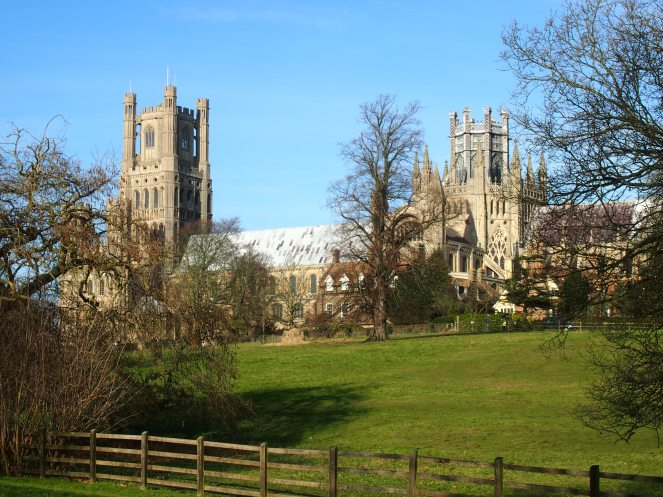
Ely Cathedral was originally founded as a monastery by Etheldreda (also known as Æthelthryth), daughter of a Saxon king. Twice married, Etheldreda nonetheless took a vow of chastity for religious reasons, and in about 670 became a nun. She founded the double monastery at Ely in 673, and was its first abbess. The abbey was destroyed by Viking raiders about 200 years later, and subsequently refounded in the 10th Century. Etheldreda was reburied in the current cathedral, where her tomb was a popular destination for pilgrims, but her shrine was destroyed in the Reformation – today, her shrine and remaining relics can be visited at the Roman Catholic church of St Etheldreda in Ely.
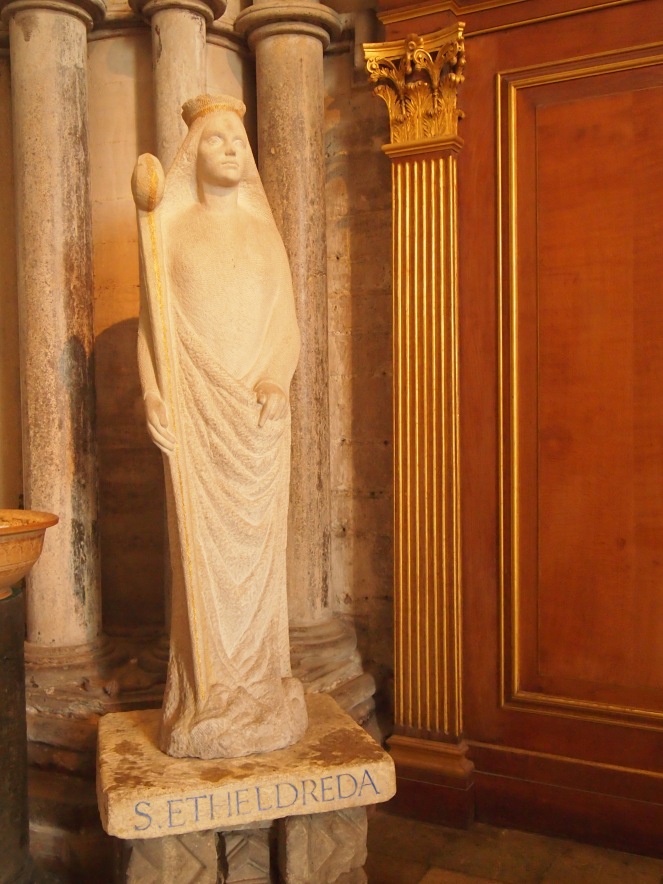
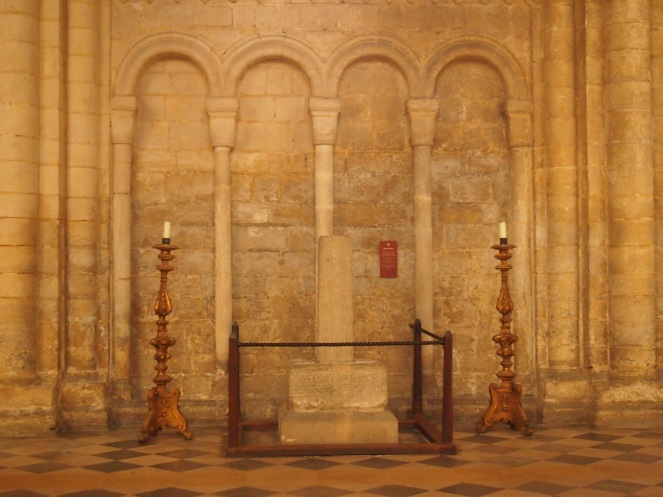
One of the things I love the most about churches, but about the great medieval cathedrals in particular, is how they incorporate the styles and tastes of so many different periods. The biggest cathedrals took many decades to build, and often incorporate more than one architectural style. Ely Cathedral is no different: the front of the church, the nave and the crossing are Romanesque (Norman) in design, while the spectacular ocagonal “lantern” tower and the choir are Gothic.
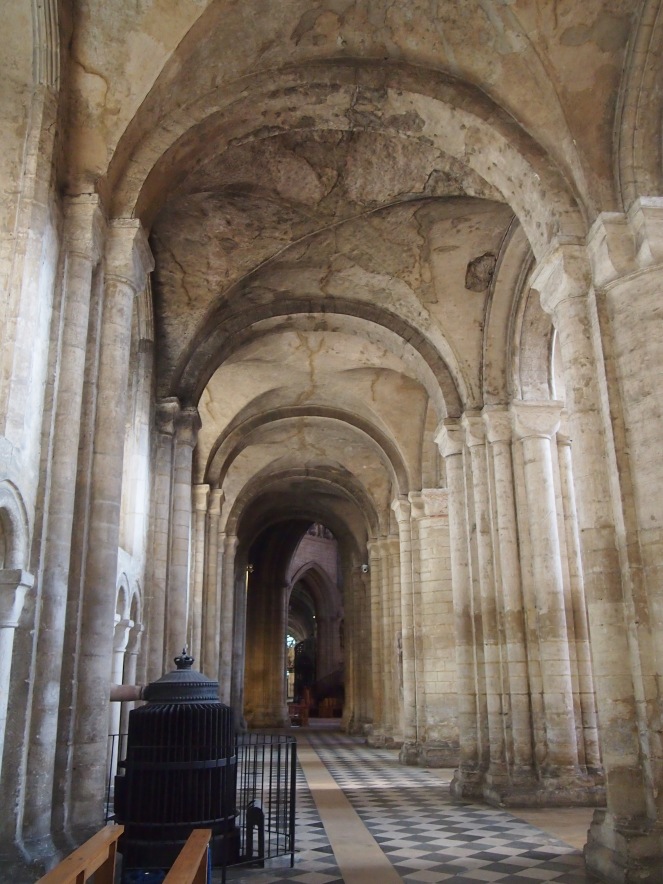
Work began on the Romanesque cathedral in about 1083. After the Norman Conquest in 1066, William the Conqueror’s regime had sought to stamp its authority on the English people through the building of imposing stone castles and churches. In the area around Ely, the Normans encountered resistance. Led by a man called Hereward, the rebels blockaded themselves on the Isle of Ely (at that time still surrounded by water and marshland) until the Conquerer’s men found a safe passage through the marshes to storm the island and end the siege. In the 19th Century, Charles Kingsley wrote the novel Hereward the Wake: Last of the English, depicting Hereward as a folk hero and giving his story a much wider audience.
It is unsurprising, when one considers the rebellion, that Ely was chosen as the site for a magnificent cathedral built in the Norman style. Towering over the marshes, Ely Cathedral would have been a stark reminder of the power and prestige of the Norman regime.
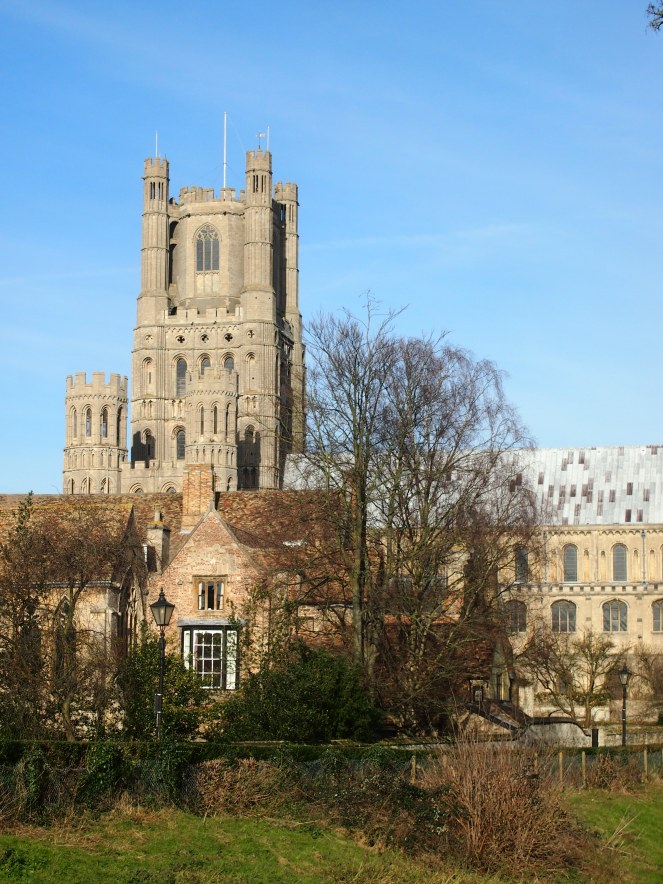
The Romanesque interior features the solid, rounded arches that are characteristic of Norman architecture.
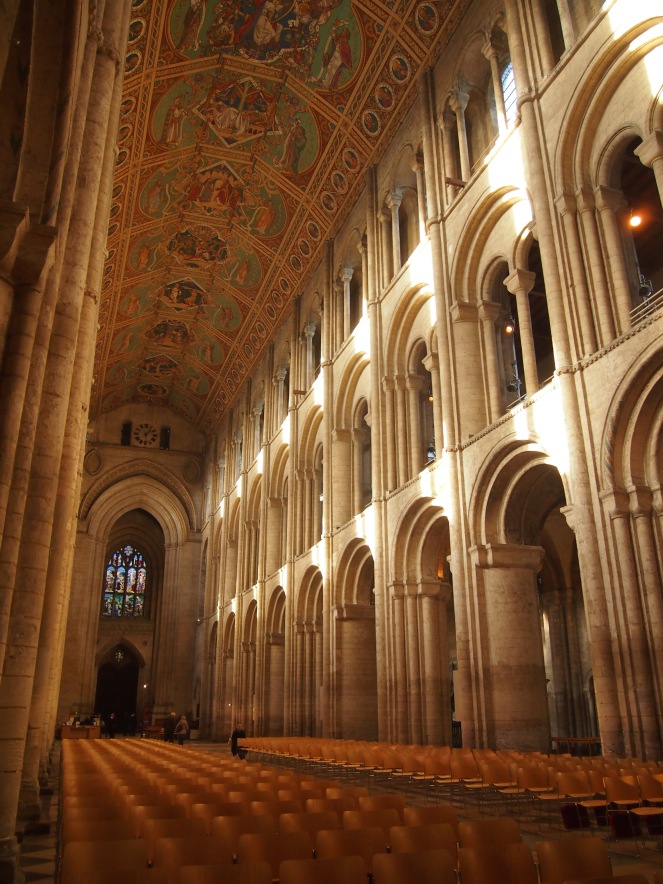
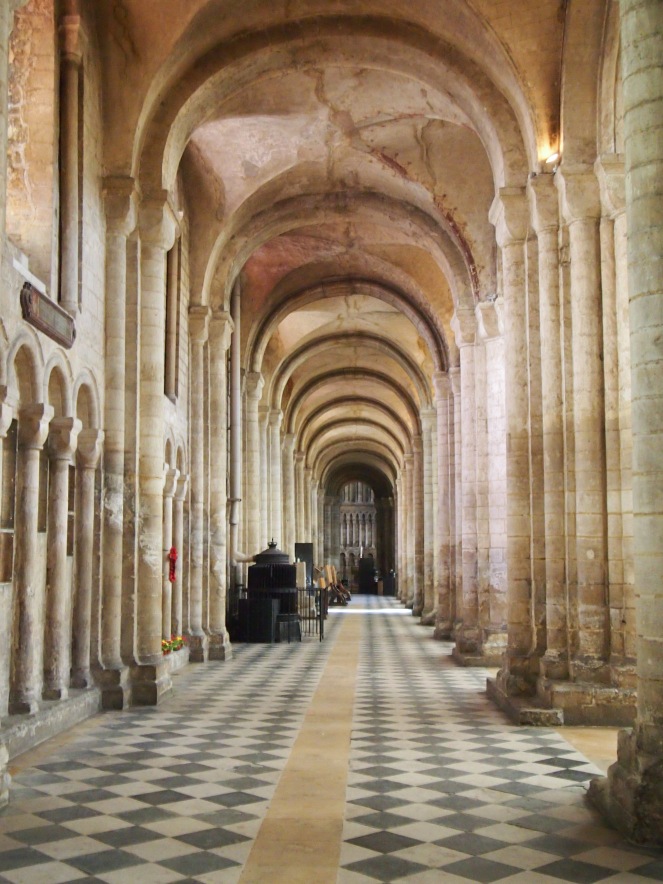
Remarkably, traces of the elaborate painted decoration from the medieval period survive on some of the ceilings, giving us a brief glimpse into how the cathedral might have looked centuries ago – certainly a big contrast to the plain stone columns and arches we see today.
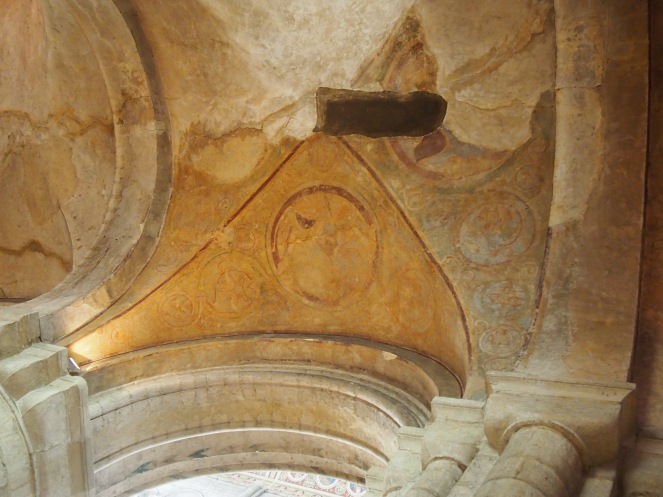
Catastrophe hit the cathedral in February 1322. The huge square crossing tower collapsed, damaging or destroying the choir as it fell. At the time – and possibly related to the tower’s collapse – building work was taking place on a Lady Chapel and the man in charge of the project, Alan of Walsingham, designed a unique new structure to replace the fallen tower.
The octagonal lantern tower is a true wonder of medieval architecture. The Norman crossing tower had been supported by four pillars, but Alan of Walsingham added a further four pillars, meaning that the new tower’s weight was distributed over eight pillars, which would reduce any chances of another collapse. The new tower was also constructed in wood rather than stone, and created a stunning octagonal structure with a vaulted ceiling and topped with a dome, which was later replaced by the glazed lantern tower we see today.
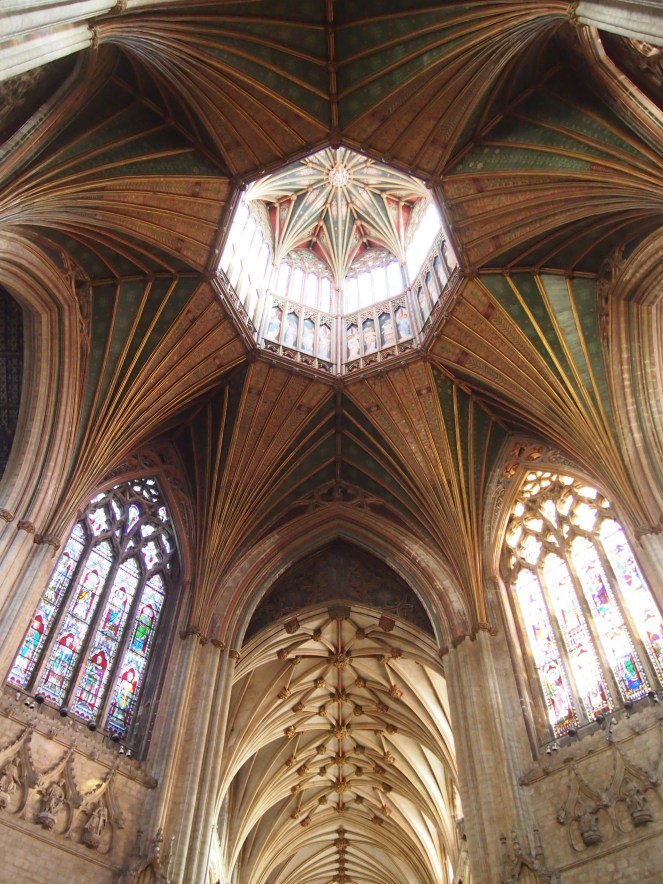
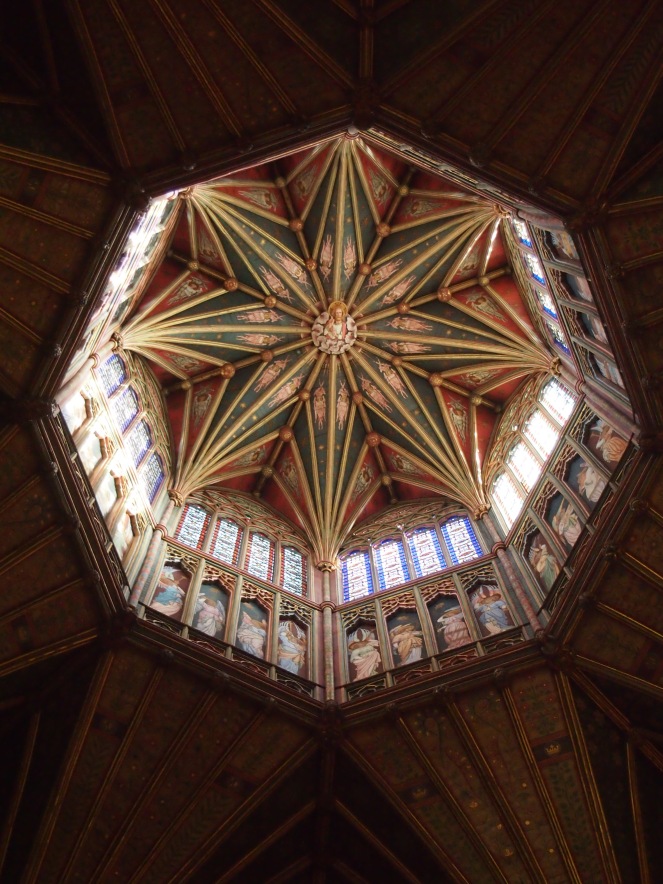
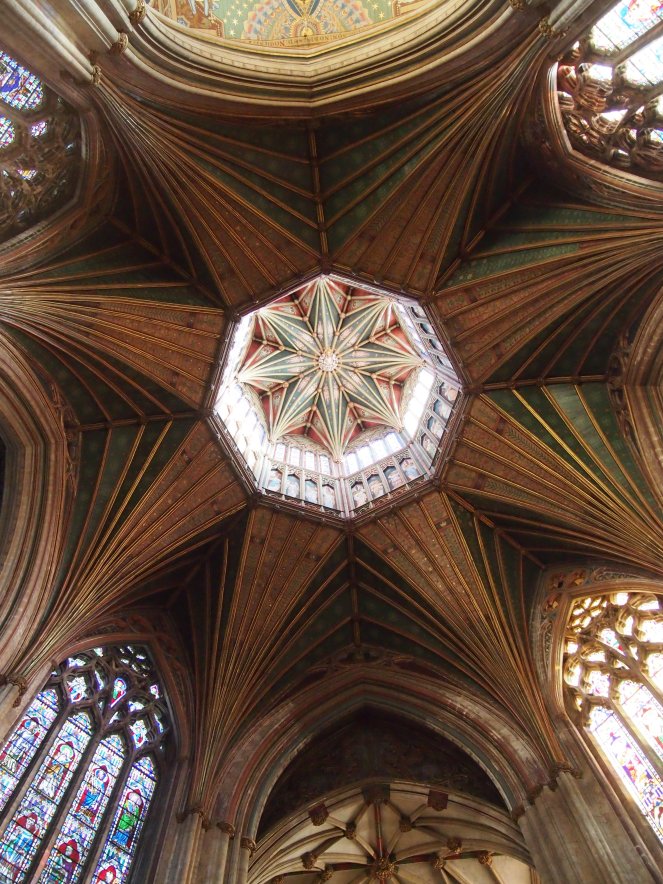
I was so fortunate with the timing of my visit to the Cathedral. It was a bitterly cold day, but when I arrived the bright winter sun was streaming through the stained glass windows and lit up the building beautifully. Had I arrived even an hour or two later, the light would have been nowhere near as impressive. Compared to the murky, gloomy day when I visited Southwell Minster at the end of last year, where taking decent pictures of the minster’s interior was a struggle, the weather in Ely was an absolute dream.
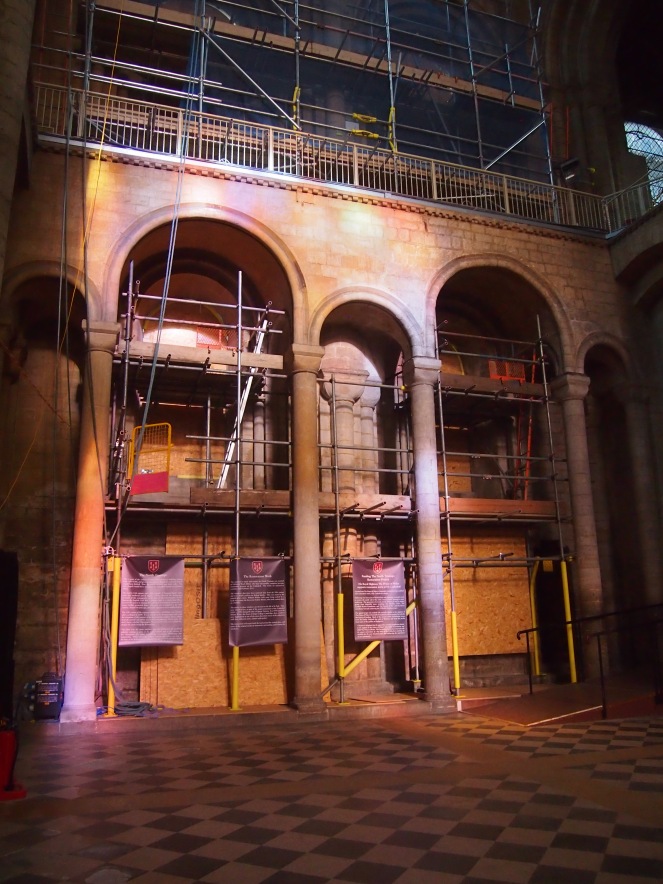
Alan of Walsingham was also responsible for some of the work on the choir, and in the early 14th Century further work took place in this part of the cathedral. The choir and the chapels off it contain some of the most sumptuous examples of Decorated Gothic stonework in Britain, with intricately decorated screens and vaulted ceilings.

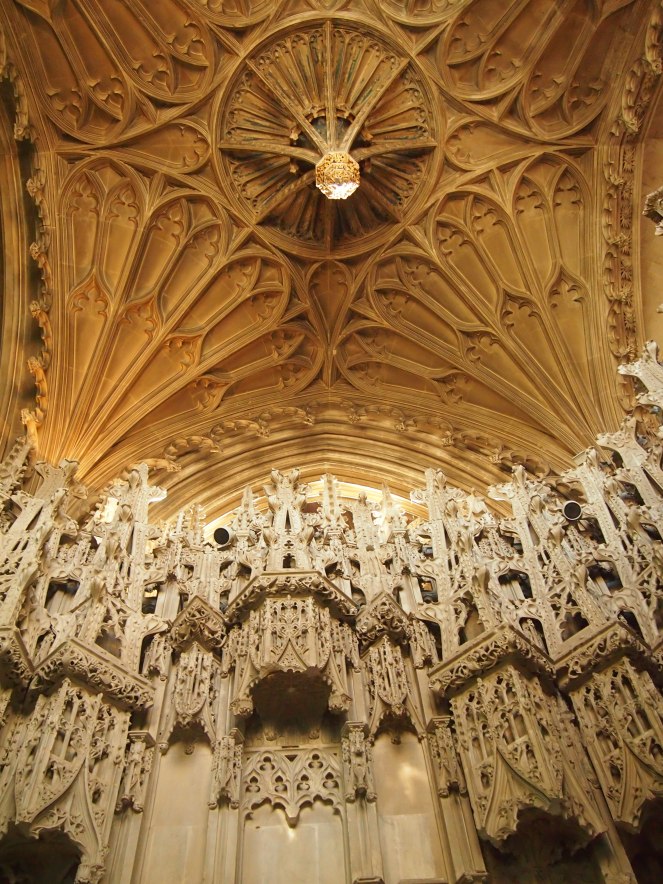
Decorated Gothic architecture dates from around 1290 to about 1380, and is characterised by intricate vaulting, elaborate window tracery and sumptuous carving.
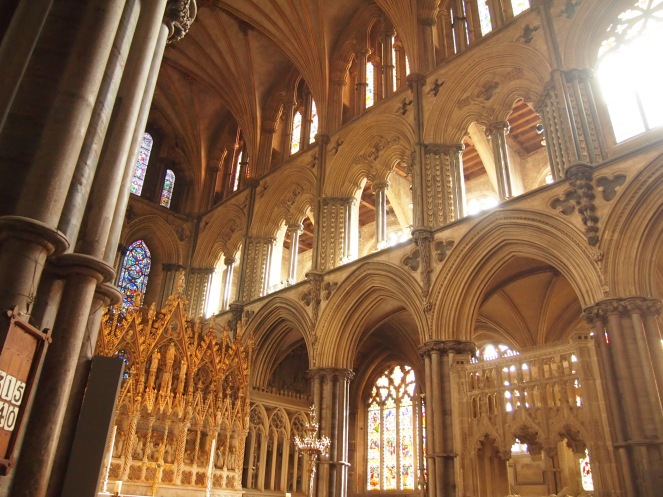
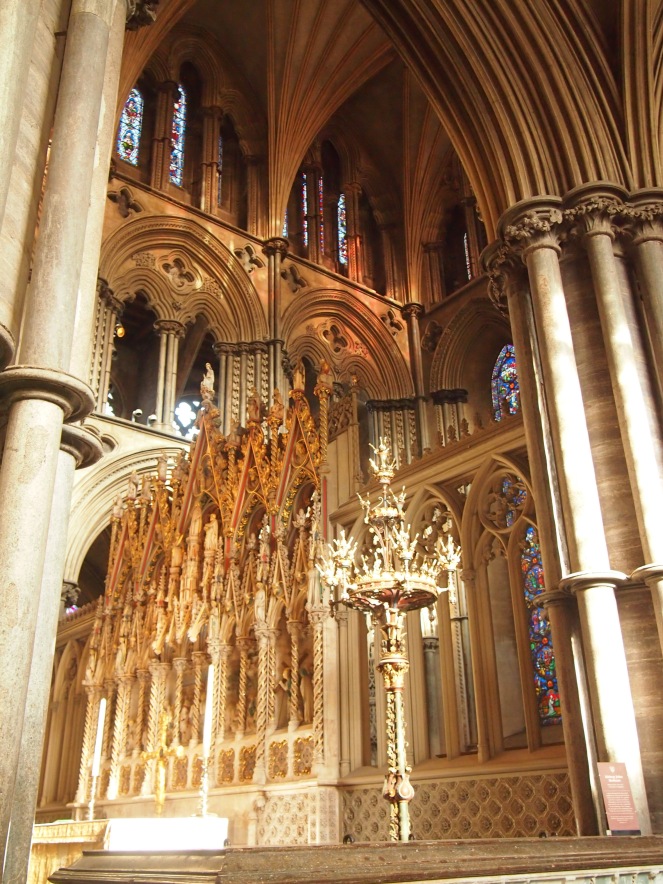
Sadly, many of the little features of the Decorated sections of Ely Cathedral were the victims of the destruction of the Reformation. Alcoves survive with their statues missing, or with the faces of statues smashed.
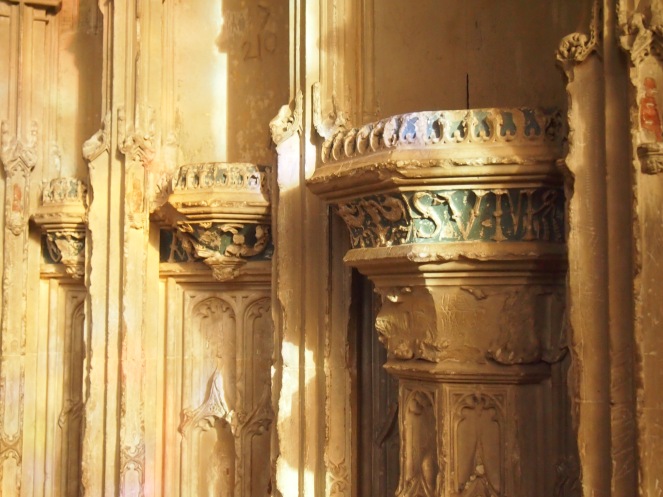
This destruction, which also included the removal of the cathedral’s medieval stained glass windows, was carried out on the order of Bishop Thomas Goodrich, who was a supporter of Henry VIII’s split from the Church in Rome. Clearly a pragmatic figure, Thomas had been one of the clergy consulted over the legality of Henry’s marriage to Catherine of Aragon, and considering that he was made Bishop of Ely in 1534, after Henry had put Catherine aside to marry Anne Boleyn, suggests that he was helpful to Henry. He continued to be a supporter of the Reformation and helped to translate the Gospel of St John. However, by the time that the Catholic Mary I came to the throne, Thomas made his peace with the Queen, converted back to Catholicism and remained Bishop of Ely until his death in 1554.
It’s not really known how much damage Ely Cathedral suffered during the English Civil War, a period infamous for damage and destruction to many of Britain’s medieval churches. It’s possible that any statues that survived the destruction of the Reformation would have been destroyed during the Civil War. Oliver Cromwell is probably Ely’s most famous former resident – his Ely home his now a popular tourist attraction – and he ordered the Cathedral to be closed. It remained closed for about 10 years, and during that time was used to stable horses.

Over the years, the Cathedral had suffered from structural problems as well as the vandalism of the Reformation and Civil War, and in the mid-nineteenth century the Cathedral was subject to a sympathetic restoration by the Gothic Revival architect and church restorer George Gilbert Scott. Ely was Gilbert Scott’s first cathedral commission, and he worked hard to restore the iconic lantern to its earlier form.
It was around the same time that new stained glass windows were installed, and the dramatic painted ceiling of the nave was added. This depicts scenes from the Bible and was done by Henry Le Strange and Thomas Gambier Parry, the latter of whom was also responsible for the beautiful repainting of the octagon and lantern.
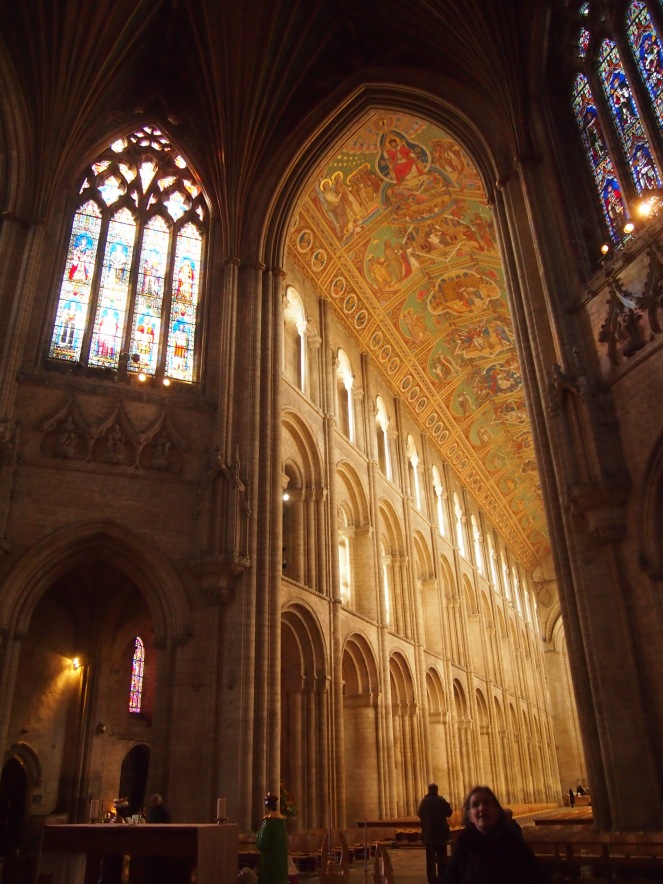
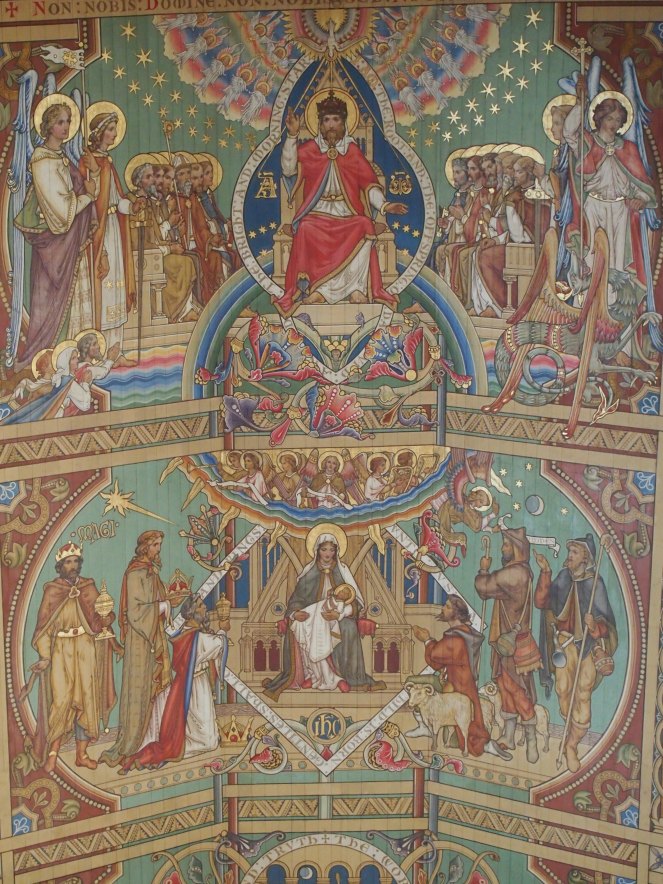
Despite the efforts of those who worked to restore the Cathedral in the Victorian period, by the mid 1980s some serious structural problems came to light, problems that were grave enough to threaten the building’s structural integrity and that risked the closure of the Cathedral. The period between 1986 and 2000 is now described as the “Great Restoration”. This multimillion pound project secured the future of the church, with a thorough structural survey leading to a major restoration of stonework, woodwork, glass and lead.

Ely Cathedral is also home to a number of interesting graves from over the centuries. Although the shrine of St Etheldreda was destroyed, a number of medieval effigies and brasses survive.


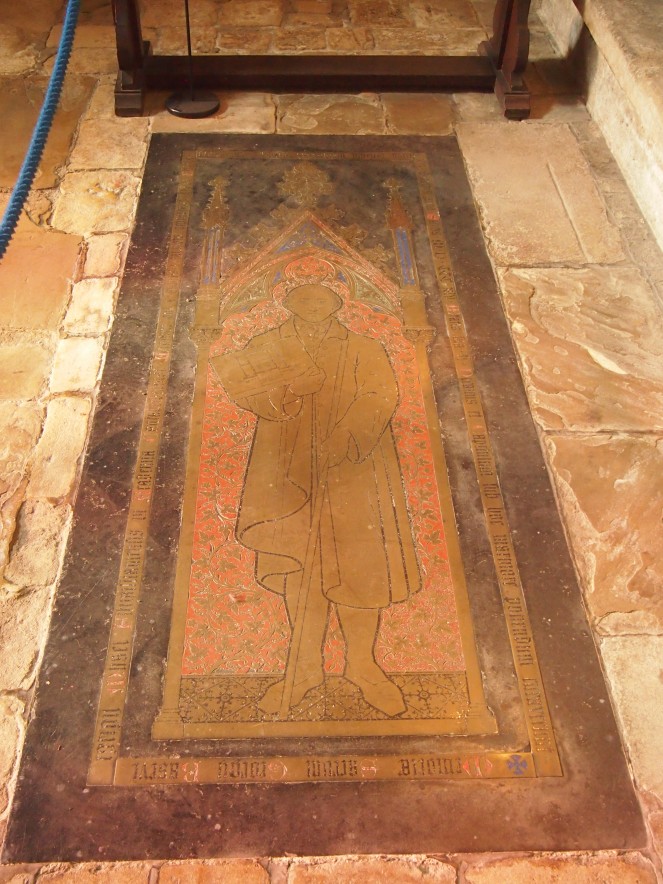
My favourite of the graves was a 16th Century effigy of an ancestor of Oliver Cromwell, Robert Steward, who died in 1570. Resting on one arm in a relaxed pose, his effigy is brightly painted (perhaps this was restored in the Victorian period, I’m not sure), his monument is decorated with family symbols and coats of arms.
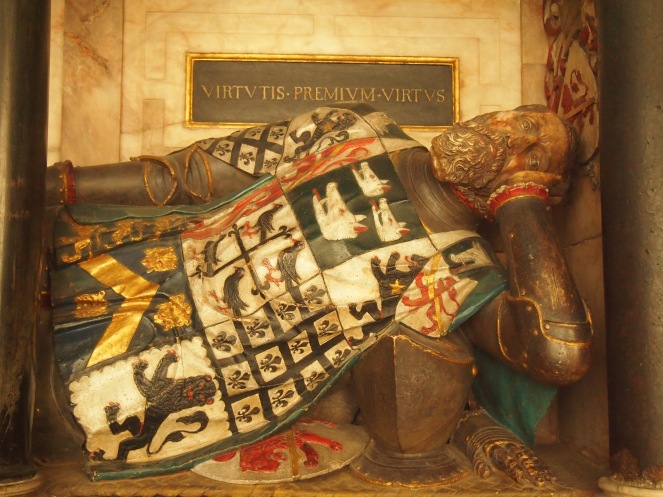
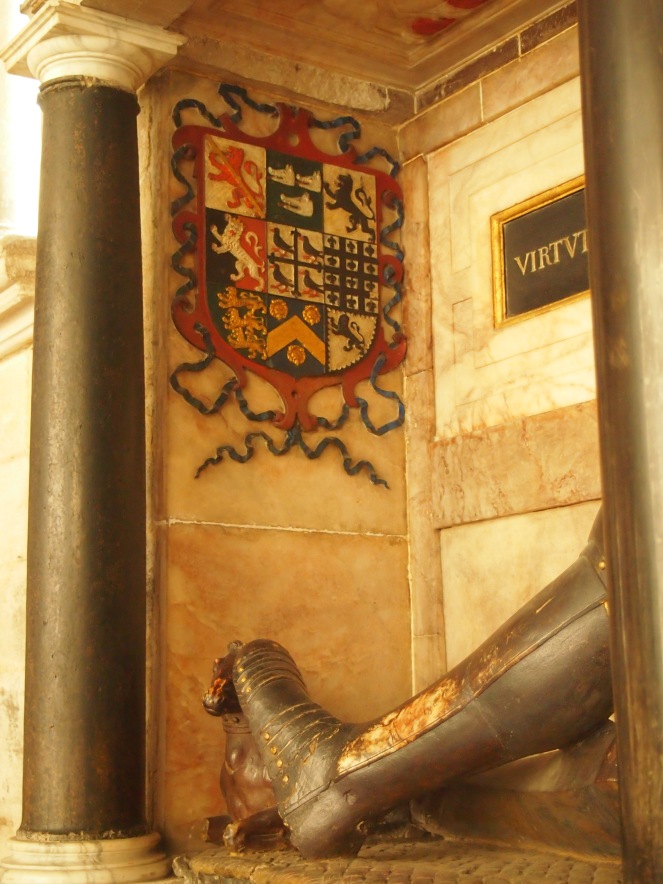
Later gravestones reflect the fashions of the time – as well as effigies, monuments decorated with cherubs or memento mori symbols can be seen.
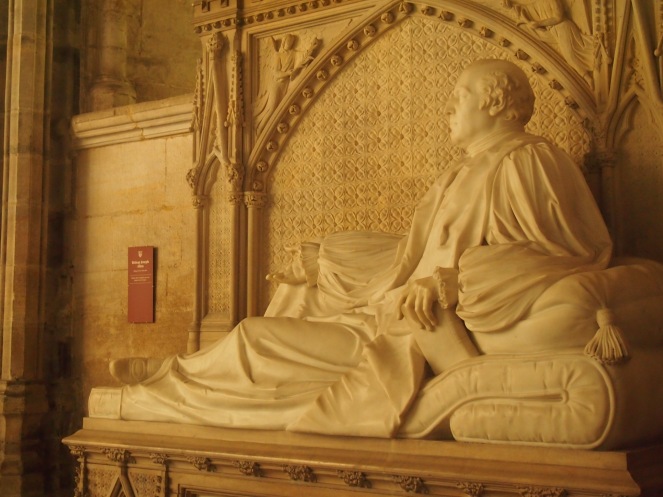


Some of Ely’s Victorian bishops chose to be buried in tombs that reflected the cathedral’s medieval past. The effigy pictured below looks like it could have been constructed five or six hundred years earlier than when it actually dates from. The Gothic Revival brought with it a renewed interest in Britain’s medieval heritage and there are countless examples of buildings and monuments that were constructed in this architectural style – some of the most famous examples include the Albert Memorial in Hyde Park and the hotel at St Pancras station in London, both of which are works by George Gilbert Scott.
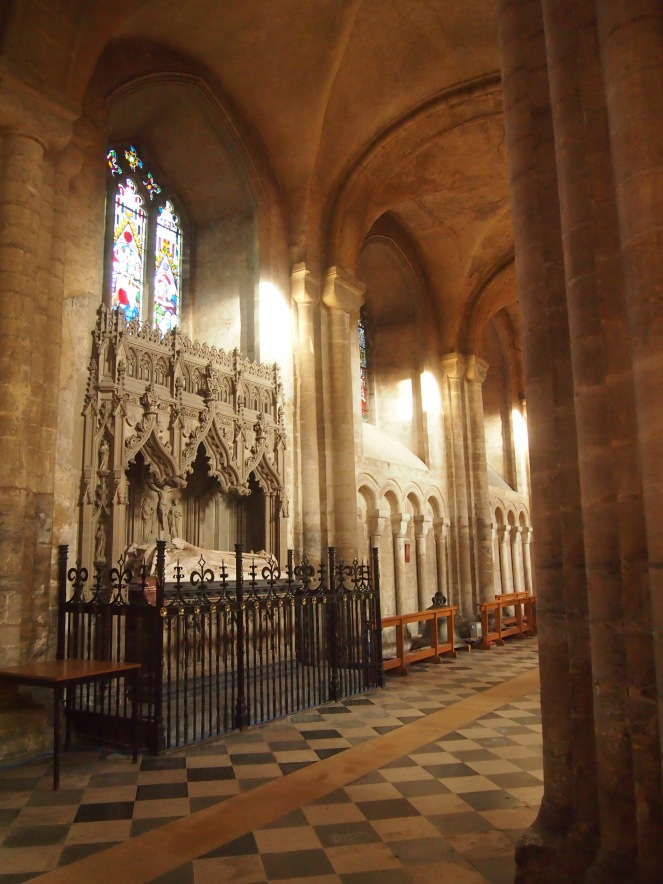
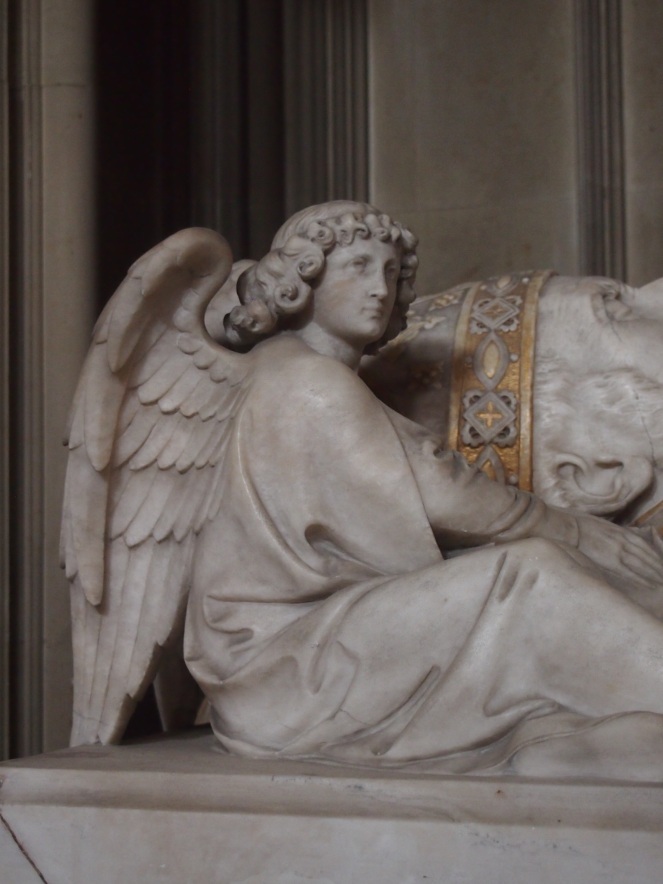
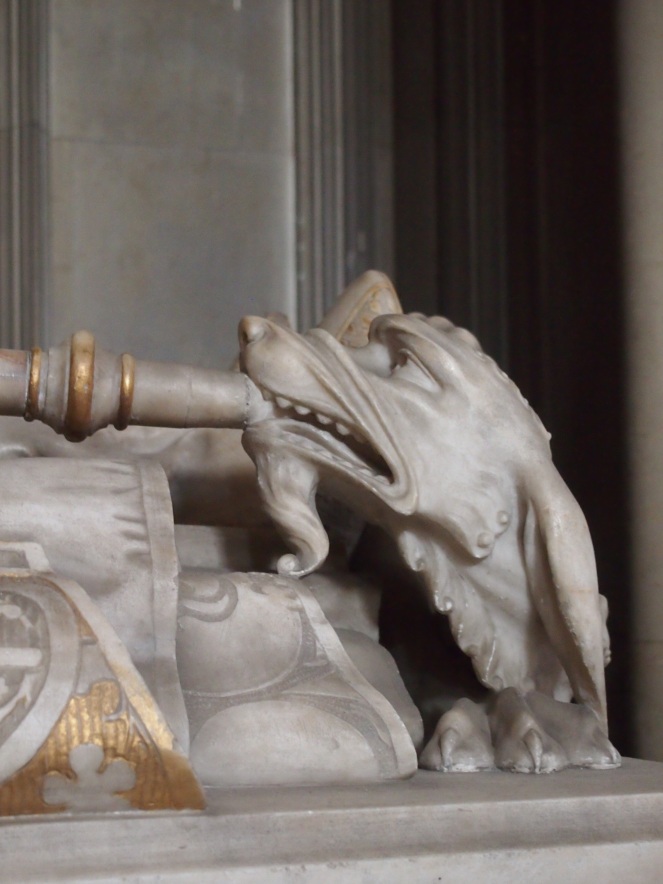
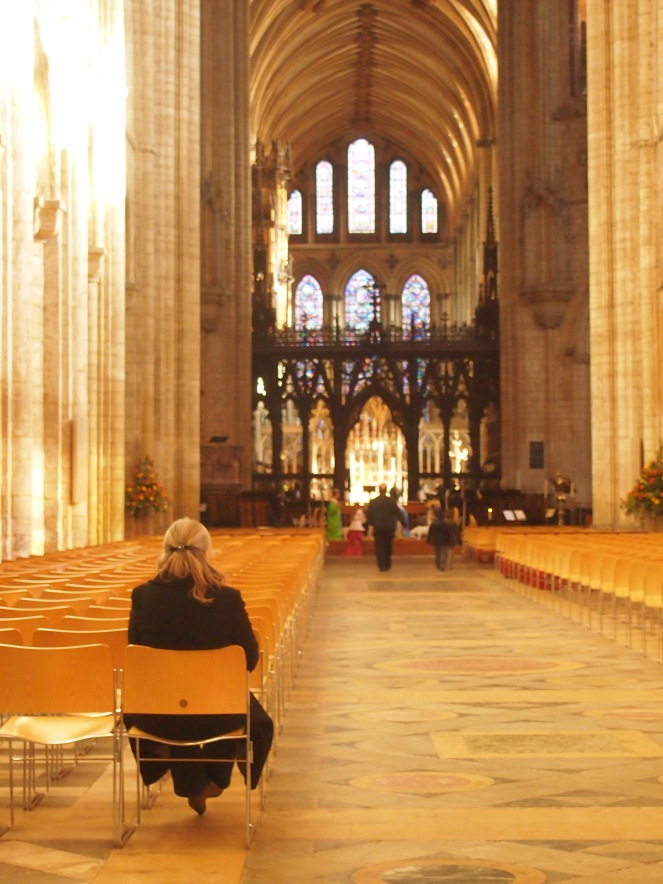
I am so glad that I made the effort on a bitterly cold day to visit Ely Cathedral. The stunning light that day, coupled with the beautiful features created or restored in the Victorian period, showed off an imposing, colourful building full of fascinating details. The cast iron heaters, which cannot be cheap to run, added some much needed warmth after the bitter winds blowing outside. The building contains stunning examples of both Romanesque and Gothic architecture, and the staff and volunteers working there were on hand to provide a friendly welcome and fascinating explanations of the cathedral’s past and present. The admission fee provides the option to convert your ticket to a pass that gives you free re-entry to the Cathedral for a year, and the Cathedral is also home to exhibitions (the current one is Ecclesiastical Embroidery) and a stained glass museum that is home to examples of stained glass from the 13th Century to the present day. Ely itself is only an hour from London on the train. It’s definitely worth a visit to this tiny old city with the stunning medieval “ship of the Fens” at its heart.
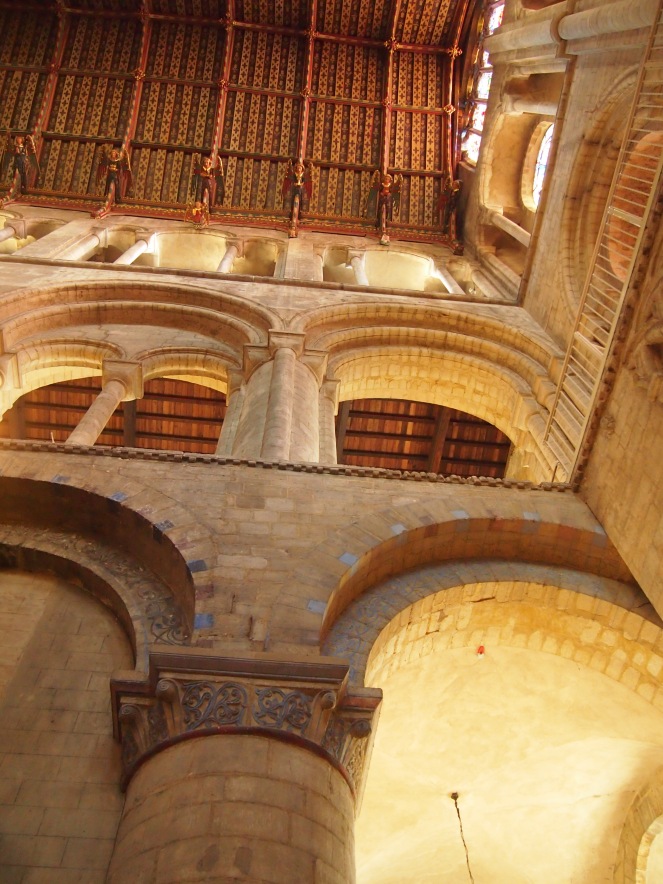

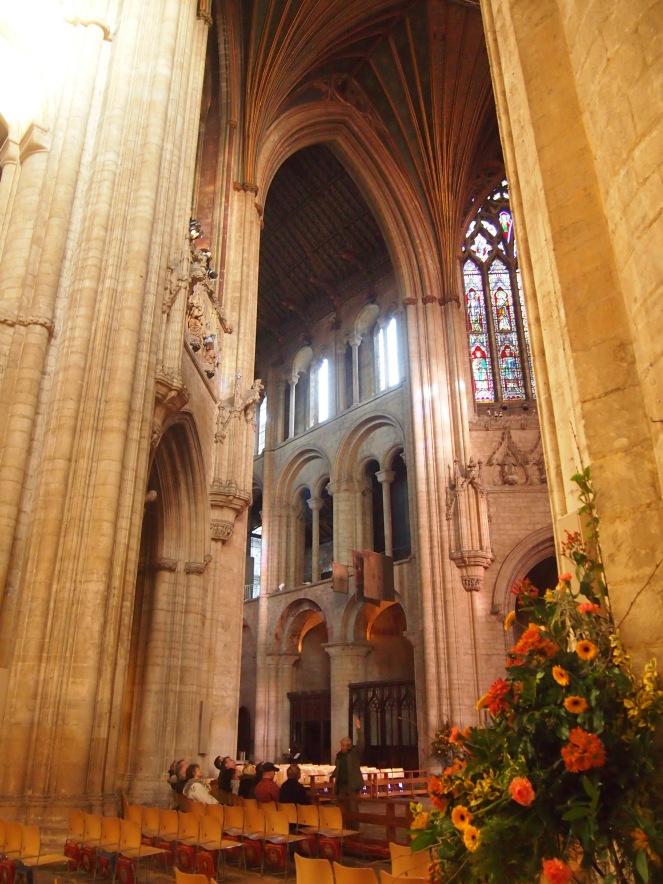


References and further reading
The Story of Ely Cathedral http://www.elycathedral.org/history-heritage/the-story-of-ely-cathedral
Ely Cathedral – Eastern Cathedrals http://easterncathedrals.org.uk/members/ely-cathedral.php
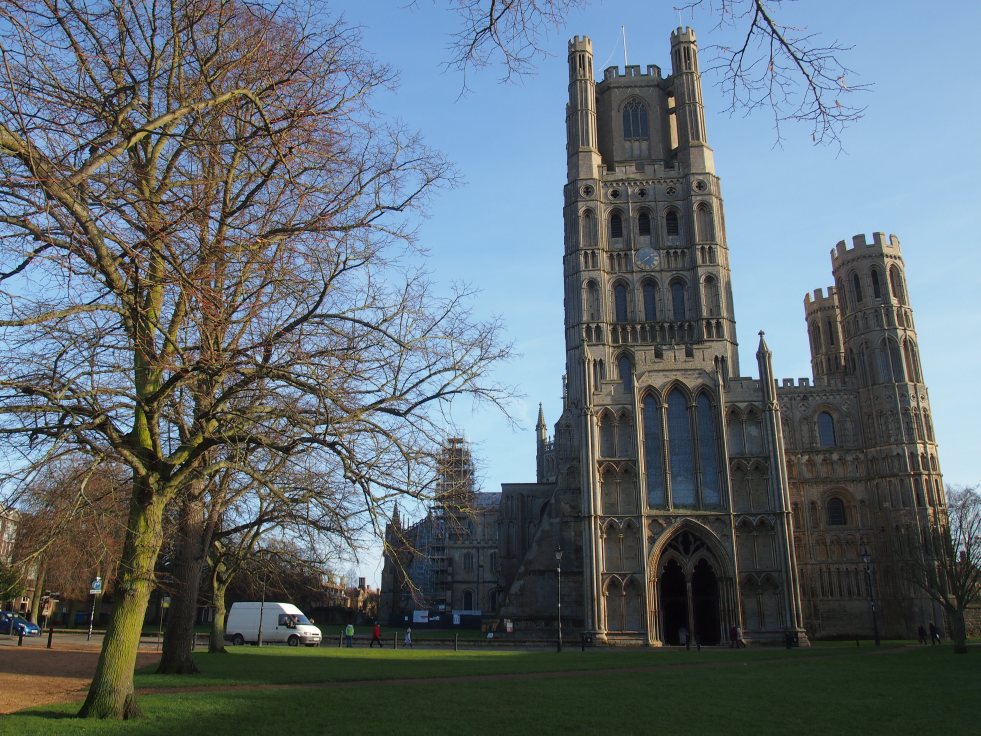

An absolutely stunning cathedral! Never had the chance to go in but I’ve seen it in passing on the train – stands out like a beacon on the flat Fens landscape!
LikeLike
It’s such a beautiful, imposing building. It does look amazing from the train – I definitely recommend visiting it next time you’re in the area, as the interior is really something. I absolutely love medieval cathedrals anyway, but Ely really took my breath away.
LikeLiked by 1 person
I shall add it to the list! Cheers for the post anyhow – the photographs are amazing and give a sense of what it is like in the flesh.
LikeLike
Your photos are fantastic Caroline! That lantern is just stunning. I must see this cathedral someday.
LikeLike
Thank you, Susan! Ely Cathedral is well worth a visit. I loved how colourful parts of the interior are, and the lantern tower is absolutely amazing. I believe that it’s possible to climb up some of the cathedral’s towers but sadly they didn’t seem to be doing those tours when I was there. Probably just as well, it was such a cold, windy day when I visited!
LikeLiked by 1 person
Another amazing post – photos and information are fascinating. I love the octagonal lantern tower. And so much history. Thanks for this.
LikeLike
Thank you so much, Andrew! It’s a wonderful cathedral, and I love how its story weaves in and out of some of the bigger events in England’s history too. The octagonal lantern tower is a really special structure – I was quite in awe of it.
LikeLike
Ely has been near the top of my ‘list’ of places that I haven’t visited but want to for ages, thanks for the fantastic nudge …
LikeLike
Yes, go go go! Ely is a lovely place and the cathedral is fascinating. Altogether I probably spent the best part of three hours wandering around, taking pictures and exploring.
LikeLike
We visit quite a lot, mainly because i just love taking photos of this amazing building. The interior and exterior are wonderful and you can see the Cathedral for miles, as you make your way across the flat fens. Really enjoyed your photos, its always interesting to see how other people see a building, when you, yourself know it very well. By the way, did you see the roof angels. We visited Liverpool Cathedral today, totally different than Ely, but a very remarkable building 🙂
LikeLike
Ely Cathedral is such a wonderful, photogenic building. I absolutely loved exploring it and was really grateful for the fantastic light I got that day.
I love both of Liverpool’s cathedrals – which one did you visit? They are both so distinctive. I was properly awestruck the first time I went into the Anglican cathedral – an amazing building.
LikeLiked by 1 person
We went into the Anglican one, and like you I was amazed, I loved it, the power of it and the sheer size is just over awed me. I took some photos of the RC one, but I always thought it was a lot bigger, but I understand it is quite something inside…..we ran out of time as we had to drive back to Norfolk.
LikeLike
The Catholic cathedral is stunning as well, and completely different to the Anglican building. I really love the architecture of both buildings, they have the “wow” factor that modern churches don’t often have.
LikeLiked by 1 person
Caroline, once again a fascinating and beautiful tour of Ely. Thanks fro sharing your insights and your wonderful vision. Anyone interested in stained glass should check out the online view of Ely’s collection of English Stained glass. It is wonderful. From far away in Missouri, I get to travel to beautiful places with you. Thanks. Bruce
Let me know what address shows when I respond. Thanks
LikeLike
Thank you Bruce! I had a wonderful day exploring Ely and the cathedral was even more beautiful than I was expecting. Luckily the good weather meant that I saw the stained glass at its best!
Your website is looking good and I’m looking forward to seeing more of Kansas City’s stained glass!
LikeLike
Great post! For those now inspired to visit, I’d also recommend the tour of the Tower – although only if you’ve got a head for heights!
LikeLike
Thank you Bob! I didn’t do the tower tour myself, but I can imagine the views are spectacular!
LikeLike
What a wonderful post, thank you 🙂
LikeLike
Glad you enjoyed it!
LikeLike
Marvellous post, and beautiful photographs. Your enjoyment of the building shines through the photographs. Thank you.
LikeLike
A wonderful post with stunning photos. Ely is one of my favourite cathedrals and I recognised some of the memorials and decoration from previous visits. Did you get up to the stained glass museum?
LikeLike
Thanks for this post. I last visited Ely in 1983 and was interested to hear about the subsequent Great Restoration. It truly is a magnificent cathedral and it is gratifying to find that the congregation was able to undertake such a large project.
LikeLike